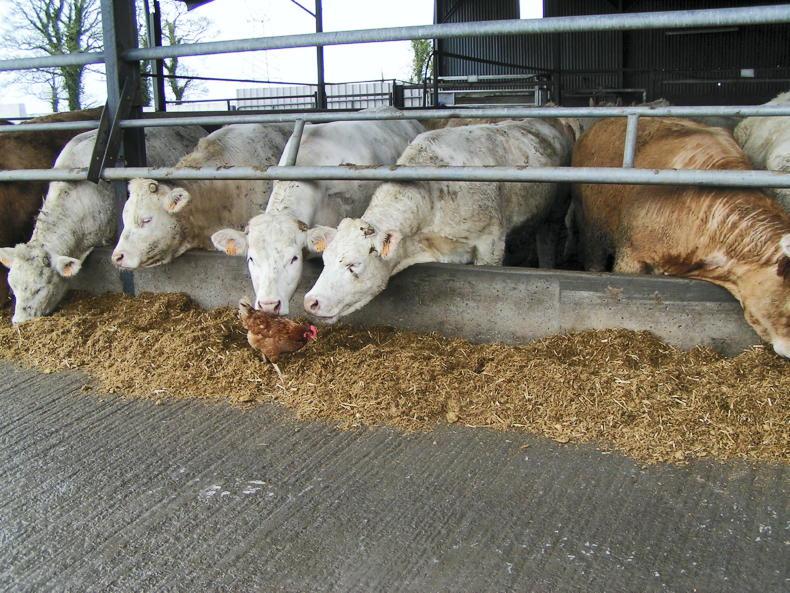With cattle housed early in many parts of the country due to deteriorating ground conditions, it was never more important to complete a quick fodder budget for your farm.
Taking action early is key in alleviating any problems or staring at a bare silage pit wall next January.
The numbers of stock and the length of your winter are critical for the budget to work. Be realistic in terms of winter length.
You are probably looking at six months in a lot of the northwest at the moment and that means getting out on 1 April with all stock.
Weanlings might get away with a shorter period and obviously everything will change as you move south.
Table 1 outlines how to calculate the amount of silage that you need for the winter months. For example, if a farmer had:
20 cows x 1.4 tonnes/month x 6 months = 168 tonnes.20 0-1 yr olds x 0.7/tonnes/month x 5 months = 70 tonnes.That means the above farm needs 238 tonnes or 262 bales for the winter months.
The next step in the budget looks at how much silage you have in the yard. It’s a simple exercise multiplying the length by the breath by the height of the silage pit.
Since most silage pits aren’t uniform in height, use your best guess as to what the average height of the settled silage is to the budget.
For example:
If your silage pit measured 25 metres long by 10 metres wide by two metres deep, this would mean you have 500m3 of silage. To get this into tonnes you divide it by 1.35, so that means there is 370 tonnes of silage in this pit.
It’s probably a good idea to reassess the fodder situation at Christmas time to see where you stand for the rest of the winter.
Selling off cull cows, store cattle and increasing meal levels to finishing cattle will all help to reduce the silage requirements on your farm. Purchasing silage is also an option but can sometimes get very expensive in times of shortages.
With cattle housed early in many parts of the country due to deteriorating ground conditions, it was never more important to complete a quick fodder budget for your farm.
Taking action early is key in alleviating any problems or staring at a bare silage pit wall next January.
The numbers of stock and the length of your winter are critical for the budget to work. Be realistic in terms of winter length.
You are probably looking at six months in a lot of the northwest at the moment and that means getting out on 1 April with all stock.
Weanlings might get away with a shorter period and obviously everything will change as you move south.
Table 1 outlines how to calculate the amount of silage that you need for the winter months. For example, if a farmer had:
20 cows x 1.4 tonnes/month x 6 months = 168 tonnes.20 0-1 yr olds x 0.7/tonnes/month x 5 months = 70 tonnes.That means the above farm needs 238 tonnes or 262 bales for the winter months.
The next step in the budget looks at how much silage you have in the yard. It’s a simple exercise multiplying the length by the breath by the height of the silage pit.
Since most silage pits aren’t uniform in height, use your best guess as to what the average height of the settled silage is to the budget.
For example:
If your silage pit measured 25 metres long by 10 metres wide by two metres deep, this would mean you have 500m3 of silage. To get this into tonnes you divide it by 1.35, so that means there is 370 tonnes of silage in this pit.
It’s probably a good idea to reassess the fodder situation at Christmas time to see where you stand for the rest of the winter.
Selling off cull cows, store cattle and increasing meal levels to finishing cattle will all help to reduce the silage requirements on your farm. Purchasing silage is also an option but can sometimes get very expensive in times of shortages.






 This is a subscriber-only article
This is a subscriber-only article











SHARING OPTIONS: